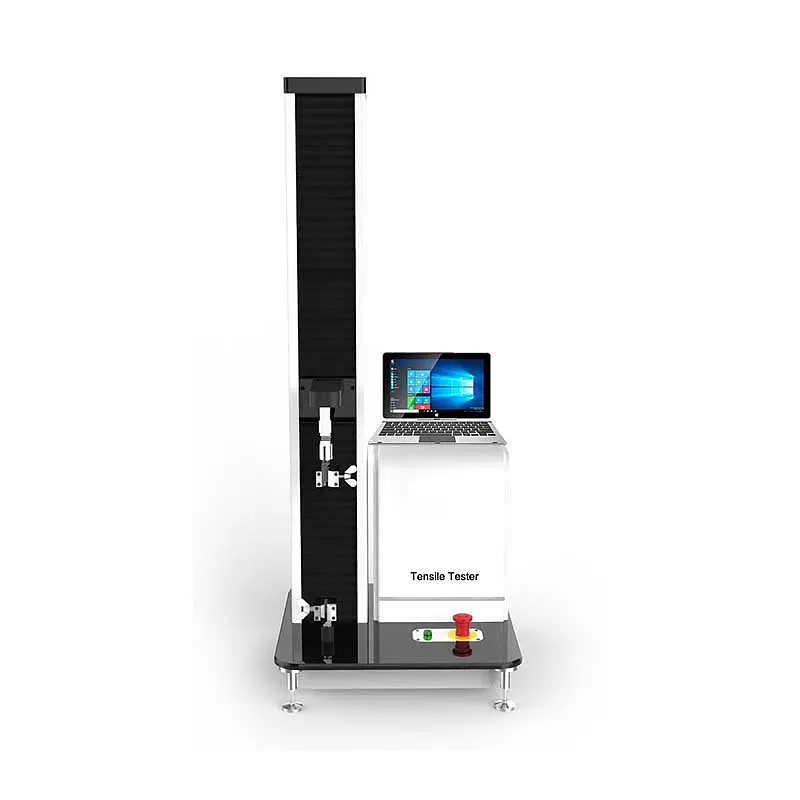Puncture testers calculate puncture resistance values such as peak force and energy absorption based on the force data obtained during the test.
Here’s a general overview of how these values are calculated:
Peak Force: The peak force is the maximum force experienced during the puncture test and indicates the material’s ability to resist penetration. It is typically determined by identifying the highest point on the force versus time curve obtained during the test. The load cell of the puncture tester measures the force continuously as the probe penetrates the material, and the highest recorded force corresponds to the peak force.
Energy Absorption: Energy absorption is a measure of the material’s ability to absorb energy during a puncture event. It represents the work done in deforming and penetrating the material. To calculate energy absorption, the area under the force versus displacement curve is determined.
Displacement Calculation: The displacement or penetration depth can be measured directly using sensors or calculated by integrating the velocity data if available. The penetration depth is the vertical distance traveled by the puncture probe during the test.
Force-Displacement Curve: The force values recorded by the load cell are plotted against the corresponding displacement values. The resulting force-displacement curve is used to calculate the energy absorption.
Integration: The area under the force-displacement curve is calculated by numerical integration methods such as the trapezoidal rule or Simpson’s rule. This integral represents the energy absorbed by the material during the puncture test.
Energy Absorption Calculation: The integrated area under the force-displacement curve provides the energy absorption value. It is often expressed in units such as Joules (J) or Newton-meters (Nm).
It’s important to note that specific calculations and formulas may vary depending on the testing standards or specifications being followed. puncture tester suppliers Different standards may have slight variations in the exact methods used to calculate these values. Therefore, it is essential to refer to the applicable testing standard or method to ensure accurate and consistent calculations of puncture resistance values.
How do puncture testers ensure that the force data obtained during the test is accurate and reliable?
Puncture testers employ several measures to ensure that the force data obtained during the test is accurate and reliable. Here are some key considerations:
Calibration: Regular calibration of the puncture tester is essential to maintain accuracy. Calibration involves comparing the force measurement system of the tester against known reference standards. By calibrating the load cell and associated components, any potential deviations or errors in force measurement can be identified and corrected.
Standardization: Adhering to recognized testing standards and protocols helps ensure consistent and reliable results. Testing standards provide guidelines for test procedures, equipment specifications, and data analysis methods. Following these standards allows for comparability of results across different laboratories and manufacturers.
Test Speed Control: Puncture testers typically allow for precise control of the test speed or force rate. Maintaining a consistent testing speed helps ensure that the force is applied uniformly and accurately. The speed control mechanism should be carefully calibrated and regularly checked to ensure it operates within the specified tolerances.
Sample Preparation: Proper sample preparation is crucial to obtain accurate results. Samples should be prepared according to the specified dimensions and conditions mentioned in the testing standard. Any irregularities, such as wrinkles or folds, should be minimized to avoid potential interference with the puncture test.
Fixture Design: The test fixture that holds the sample should be designed to securely grip the material without causing any additional deformation or slippage during the test. The fixture design should be optimized to minimize any potential stress concentration or damage to the sample.
Data Acquisition and Filtering: Puncture testers often employ data acquisition systems and filtering techniques to capture and process the force data. These systems help ensure accurate and reliable measurements by minimizing noise, filtering out extraneous signals, and providing smooth and consistent data output.
Operator Training: Adequate training of the operator is essential to perform the puncture test correctly. Operators should be familiar with the testing equipment, procedures, and safety precautions. They should follow the standardized testing methods and ensure proper positioning and alignment of the sample and puncture probe.
By implementing these measures, puncture testers aim to minimize sources of error and variability, thereby ensuring accurate and reliable force data during the testing process. Regular maintenance, calibration, and adherence to testing standards are critical for obtaining consistent and trustworthy results.

